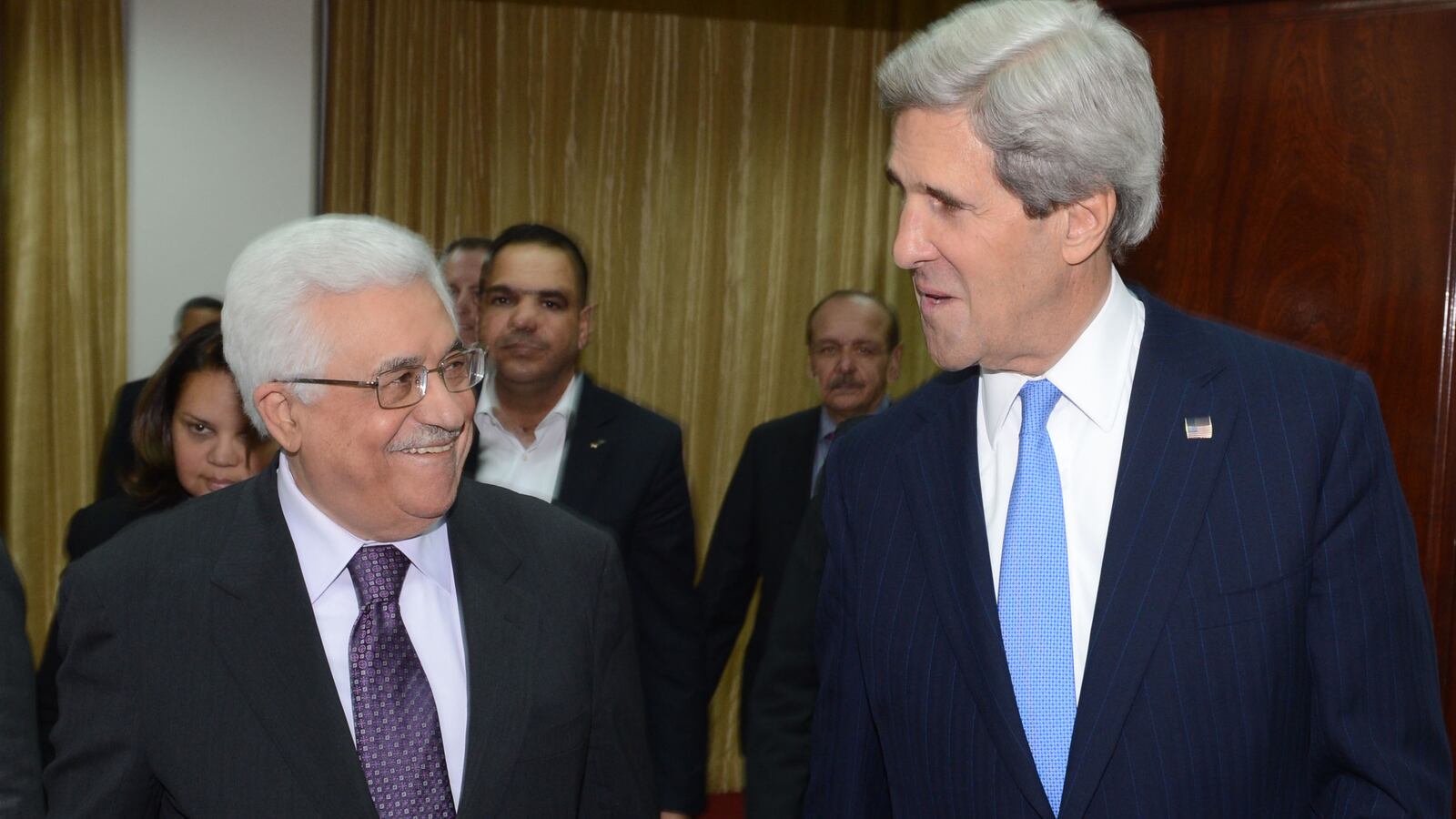President Obama’s challenge to the thousand Israeli students he addressed in Jerusalem was clear: “Speaking as a politician, I can promise you this: political leaders will not take risks if the people do not demand that they do. You must create the change that you want to see.” The President, once a community organizer himself, understands the importance of grassroots momentum to change the status quo.
Secretary of State John Kerry has since made important progress towards reviving the two-state agenda: On the political front, the Israelis appear to have agreed to impose a settlement freeze of sorts, while the Palestinians have temporarily agreed not to pursue international legal actions against Israel. On the economic front, a private sector team of business leaders now stands ready to examine investment opportunities within the West Bank. And regionally, the Arab League has revived its 2002 Arab Peace Initiative, demonstrating that there is still Arab support for the idea of two states.

Yet, despite these promising developments, the Israeli and Palestinian publics are no closer to believing that peace is on its way.The latest Pew polls report that 61 percent of Palestinians believe there is no way for an independent Palestinian state to coexist peacefully with Israel. Within Israel the figures are somewhat better—only 38 percent see no way to coexist—but the whole peace process was still virtually ignored in Israel’s last elections.
Thus, even though poll after poll indicates a plurality of each population would accept a two-state solution, a vast “incredulity gap” remains within each society. The physical erosion of the two-state solution due to settlement expansion, provocations by each sides’ leaders, violence that followed the Gaza disengagement, and relentless effects of the occupation, are causing both peoples to lose faith in the ideal of two states living beside each other in peace.
The incredulity gap poses a serious hurdle for Secretary Kerry. If the people do not believe a two-state solution is plausible, they will not actively push for it. And as President Obama made clear, without strong stakeholder engagement, there will be no pressure on political leaders to return to the negotiating table, nor remain there if the talks do take place.
There is, however, one bright spot in the recent polling data: a plurality of Israelis and Palestinians wants President Obama to play a bigger role in resolving the conflict (49 percent of Israelis and 41 percent of Palestinians). This provides an opening for Secretary Kerry to speak directly to these constituencies, bolstering support for civil society groups on both sides of the Green Line.
These groups need this extra attention: We cannot expect the grassroots in the region to make change when the mediators seeking to achieve that change pass them over.
The U.S. has established an admirable record of supporting people-to-people dialogue and regional cooperative initiatives, particularly through the auspices of U.S. AID funding programs. The Obama Administration is also in the midst of an important project to map the different civil society groups in the region to see how American support can best be allocated.
But given the urgency of the moment, the Administration needs to do more. The most immediate way of doing so is for Secretary Kerry to elevate the profile of Israeli and Palestinian two-state advocacy groups by meeting with select organizations during his next visit to the region. This meeting should mark the beginning of heightened U.S. engagement with civil society groups within each nation.
Many Palestinians believe that the U.S. has been deaf to their plight and blinded to the changing realities on the ground. By speaking with Palestinians directly, the Secretary can start a conversation that demonstrates he understands their position and promotes their understanding of his.
To be most effective, Secretary Kerry will need to speak with representatives of the varied voices of Palestinian civil society, including those who have remained active in peace advocacy as well as those who have grown too pessimistic to continue investing in the two-state solution. Kerry might not like all that he hears from these groups, but without engaging all these stakeholders, he will not be able to bring the people with him in this process.
Engaging with peace advocates in Israel is equally as important. Despite the fact that a majority of Israelis still identify the two-state solution as their preferred outcome, Israeli groups advocating two states are demoralized right now. By giving these groups an audience, Secretary Kerry can help reenergize Israel’s committed two-state advocates, emboldening them in their fight against the skepticism that abounds. And by speaking with political groups outside of the committed “left,” the Secretary can help publicize news of the promising recent developments, hopefully chipping away at the sense of futility that fuels many Israelis’ detachment.
With the same enthusiasm that Secretary Kerry has approached the economic, political and regional dynamics, he must now try to bring the people on board by directly engaging with those who have suffered the continued failures of initiatives past, building their support for efforts to start anew. If he is diligent in this task, the Secretary may just be able to translate his early diplomatic progress into concrete changes on the ground.





